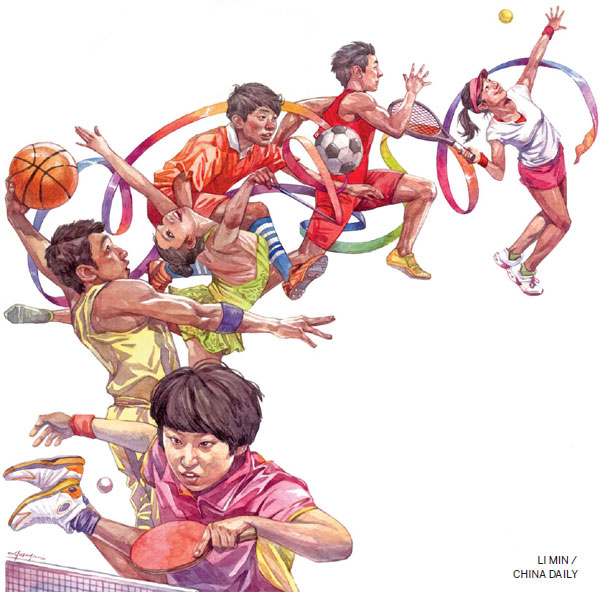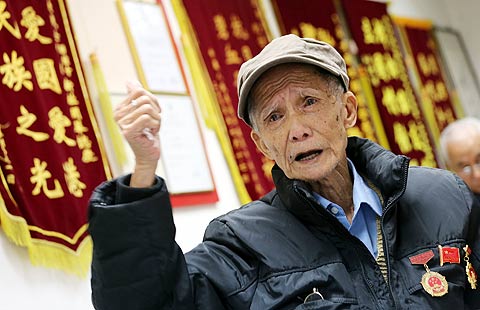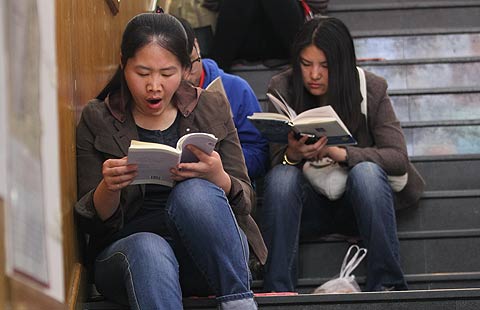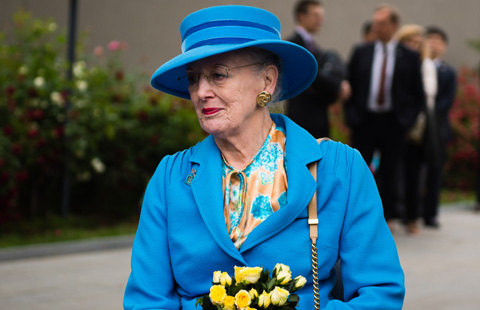Sporting chance
Updated: 2014-05-02 07:47
By Krishna Kumar Vr (China Daily Europe)
|
|||||||||||

Asia's New generation of sporting icons and growing fanbase have created openings for global companies
In her post-match speech after winning this year's Australian Open, China's Li Na made sure to thank her agent at IMG, a global talent-representing company, for making her rich.
Apart from the $2.4 million in prize money, the most successful female tennis player in Asia knew that her second Grand Slam title would unquestionably improve her position in the list of highest-paid women athletes, with new endorsement deals likely to come her way.
"We are waiting on a deal announcement for her," says Mary Jane Orman, vice-president of communications at IMG Tennis.
Li is not the lone deal sensation in Asian sports. Signaling growth in the Asian sports market, four other players also made into the recent Forbes list of the world's highest-paid athletes. Filipino boxer Manny Pacquiao topped in Asia with $34 million, followed by Indian cricketers MS Dhoni ($33.5 million) and Sachin Tendulkar ($22 million), and Japan's baseball star Ichiro Suzuki ($19.6 million).
"Various sports are creating icons and icons are in turn helping the sports industry to grow," says Mark Dreyer, founder of China Sports Insider, a sports business news and analysis website.
The rise of Chinese star Yao Ming in the NBA (National Basketball Association) in the United States is believed to have led to basketball becoming the common man's sport in China, with courts becoming commonplace in the yards of many export factories.
The recent emergence of golfing sensation Andy Zhang indicates that the 16-year-old Chinese star could be on his way to becoming the next Tiger Woods, with high-profile sponsors sitting up to take note of future deals.
Last year, Nike signed its first head-to-toe endorsement deals with two Chinese golfers, Li Hao-Tong and Zhang Xin-Jun.
A report by HSBC, Golf's 2020 Vision, said a boom in the numbers of children teeing off in China and India means that the next generation of golfers is likely to be dominated by people from Asia.
"Players like Shanshan Feng and Andy Zhang are a sign of things to come," it predicted.
Experts believe that one reason for the popularity of sports in Asia is that consumers are turning to leisure activities as they get wealthier. In China alone the number of golf courses has tripled in less than a decade.
"The center of gravity of sports business will move to Asia. Just as the popularity of cricket in India means that the subcontinent has become the economic and political center of cricket," says Marcus Luer, founder and CEO of Total Sports Asia, a sports marketing agency with offices in Southeast Asia, South Asia and East Asia.
"More TV exposure, bigger purses and sponsorship opportunities will help sports to grow significantly in the future in the Asian region," he adds.
According to a PricewaterhouseCoopers study, Changing the Game: Outlook for the Global Sports Market to 2015, the Asia Pacific has the world's third-largest sports market with revenue of around $24 billion, and is expected to have the world's third-fastest growth rate at 3.9 percent in 2015.
At present, the North America and EMEA (Europe, Middle East and Africa) regions are the largest and the second-largest sports markets in the world, respectively. Latin America is smallest with only 4.9 percent of the total pie.
"The potential of sports business in Asia is bigger than what we can imagine. We have over 4 billion people of the world's population and sports are becoming more of a lifestyle and entertainment for us," says Ronnie Lee, CEO of Singapore-based Asia Pacific School of Sports and Business.
"The growth of Asian sports business is due to many companies getting involved in various Asian sports. Global and Asian companies are spending more money to build their brand name through sports," he says.
German tire maker Continental recently announced a deal with the Asian Football Confederation to become a sponsor of the AFC Asian Cup 2015 in Australia. Under the deal, the firm will serve as the exclusive tire partner and official sponsor of the event, which will be held next January.
South Korean car manufacturer Kia Motors has renewed sponsorship of the annual Archery World Cup and other top international archery competitions. Kia has reaped the benefits of sponsoring archery, one of the most popular sports in South Korea, with enormous exposure in the media.
South Korean fashion and retail conglomerate E-Land Group, which has branches in more than 10 countries including China and India, is sponsoring a Seoul-based professional football club that will compete in the K-League Challenge, the nation's second-highest club football competition.
"Football in Asia has witnessed consistent growth in recent years, with last year's (European) Champions League final attracting the largest TV audience for a sporting event in China, with an average audience totaling over 30 million," says David Shin, director of Hong Kong-based Sporting Republic, a sport management agency.
"The rise in television audience numbers for football also underlines the belief that sports business is headed in the right direction. This is good news for sponsors as their brands get maximum visibility and exposure in Asia," he adds.
In 2012, Chelsea Football Club signed a merchandising partnership with Grand Royal Whisky in Myanmar, highlighting the reach of the English Premier League across the Association of Southeast Asian Nations region.
The Formula One motor racing event has also made substantial business inroads into Asia. With the long-running Japanese Grand Prix, it also has circuits in Bahrain, the United Arab Emirates, Malaysia, Singapore, India, South Korea, Australia and China.
"Asia is one of the most important regions for Formula One team sponsors and for the development of the series," says Askari H Zaidi, senior vice-president of corporate communications at the Jaypee Group, an Indian-based conglomerate. The group has developed India's premier motorsport destination, Buddh International Circuit, near New Delhi.
"We need to have a racing culture to turn around the motor sport," he says.
Experts in the field believe that Asia has changed the face of the sporting industry by hosting global events like the Olympics, the Commonwealth Games, and top-rung tennis and golf tournaments.
A report by the Economist Intelligence Unit, The big league? The business of sport in China, said the 2008 Beijing Olympics marked a turning point for China in terms of sports business.
"The success of the Olympics has raised curiosity about China as a market for sport," the report said. "The country built world-class facilities, including the 91,000-seat Bird's Nest stadium and the futuristic Water Cube aquatics center. The opening ceremony drew a local television audience of 842 million people. More than 100 million Chinese watched the Olympics online."
Subsequently, in 2010, China's State Council - the cabinet - issued for the first time a document promoting the sports industry in China, and predicted the market size of China's sports industry will be worth 2 trillion yuan ($320 billion; 231 billion euros) by 2020.
The document, Guiding Opinion on Accelerating the Development of Sports Industry in China, indicated that both domestic and foreign private investments in China's sports industry will be actively encouraged, and market exploration of sports performance and recreational sports would be put into action to a greater extent.
In the 12th Five-Year Plan (2011-2015), China specified that it would vigorously develop public sports and improve public sports facilities.
"Efforts will be taken to optimize the competitive sports structure and improve the overall strength of competitive sports and promote the coordinated development of sports facilities and the sports industry," the guideline stated.
Hemanshu Chaturvedi, founder and managing director at New Delhi-based consultancy HTC Sports, sees the growing potential in the region's sports industry.
"More than 60 percent of the world's youth live in Asia and the Pacific, which translates into more than 750 million young women and men between 15 to 24 years old," he says. "They represent the opportunity of growth of the sports industry. There are case studies supporting this.
"Sports business is unquestionably one of Asia's hottest emerging sectors in the future," he concludes. "With huge numbers by our side, we may even beat North American and European markets."
China Daily
|
Clockwise from top right: Former Indian cricketer Sachin Tendulkar, considered one of the greatest batsmen in history; Japanese baseball star Ichiro Suzuki; Filipino boxer Manny Pacquiao, winner of 10 world titles; retired Chinese basketball icon Yao Ming and Australian Open winner Li Na, the most successful female tennis player in Asia. AFP |
(China Daily European Weekly 05/02/2014 page1)
Today's Top News
EU: No armed intervention in Ukraine
Chinese premier visits Nigeria
Court to rule on Yingluck in Thailand
Travellers to Malaysia drop
Chinese to US grad schools drop
Ukraine moves special forces to Odessa
Slovenian PM resigns
Disclosure of military secrets becoming bigger risk
Hot Topics
Lunar probe , China growth forecasts, Emission rules get tougher, China seen through 'colored lens', International board,
Editor's Picks

|

|

|

|

|

|






